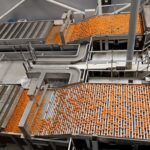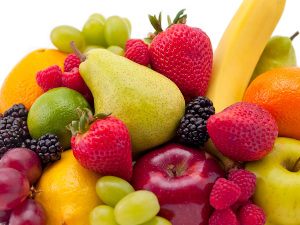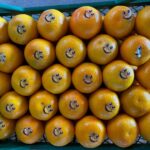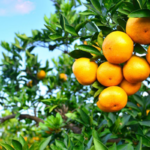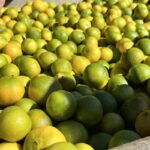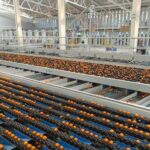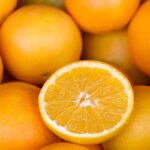China to overtake Japan as Australia’s top citrus export volume market

Late last week Citrus Australia CEO Judith Damiani announced she would be stepping down from the role at the end of 2017 after nine years at the helm, and it’s safe to say she’s finishing on a high note. Back from a visit to the buoyant orange markets of Asia, she gives Fresh Fruit Portal an in-depth interview about a “new phase” of foreign investment, following U.S. easy peeler convenience trends, and keeping a sharp eye on biosecurity threats.
“We just can’t supply the demand – there is so much interest in our product that every day we’re turning people away,” says Damiani.
It’s not a bad position to be in but it’s also a critical one for the Australian citrus sector. Damiani remembers the difficult cycles experienced by growers in the past, and recognizes now is not just a time to capitalize on new, fast-growing export destinations but to also reward loyal, traditional trading partners.
“Everyone seems to want to talk about China, China and China, which is also important, but we have to acknowledge our long faithful markets,” she says.
“Japan is a very traditional market for us and we have been exporting there for decades, but interestingly in the last 10 years we’ve seen nice growth for orange exports into Japan.
“Despite the difficulties in their economy and their aging population, we’ve actually seen growth there and in the past couple of years with the Japan Australia Economic Partnership Agreement (JAEPA) and also favorable exchange rates, we’ve seen our premium fruit become more competitive in the market.”
An insatiable demand scenario is no reason for complacency though, and before she leaves Citrus Australia the executive is putting a new approach to export promotion in motion.
“What we’ve been able to do this year for the first time is run a bigger campaign in Japan,” she says.
“We’ve run some trade seminars in Tokyo and Osaka in late May, really for the trade to give them information about the upcoming crop, the trends, the promotional activities, the residue testing program we run and things that will help them in their decisions for their Australian citrus programs.”
She says in-market activities are essential for the industry to achieve the best returns possible.
“There is a promotional program running in China this year as well, and we’ll consider a deeper engagement program campaign in China maybe next year onwards,” she says. 
“What we’ve done in Japan was a trial and we’re looking at how that might translate into other markets, very similar to what the Australian meat and dairy industries do in those markets.”
China, China and China
As much as Damiani would like to focus on traditional markets, she knows the industry’s success is inextricably linked to Australia’s biggest trading partner – China.
“In terms of dollars and value, China is number one. In terms of volume, for Australian oranges Japan is number one but I predict that this year that will change,” she says.
“I think China will become the number one volume and value market for Australian oranges and for citrus in general in 2017. That’s just based on the growth we’re experiencing in that market every year.”
“It’s only been in the last four or five years that China has risen from almost nothing to our second-biggest export market for oranges in 2016. But it’s certainly the highest-value market for Australian citrus.”
Speaking mandarin
She says the Chinese interest is mostly in Navel oranges and Murcott mandarins, with the latter well-serviced by the state of Queensland which also ships to Southeast Asia.
It is worth noting this varietal preference because it is a different type of mandarin variety that has had the most plantings in Australia over the course of recent years – the Afourer-type cultivars, known elsewhere as Nadorcott and also W. Murcott, which has nothing to do genetically with Murcott.
“It’s [mandarins] one variety in Australia that we are predicting quite significant growth over the next five to 10 years, much more so than oranges surprisingly, even though we have a lot of demand for oranges in Asia,” she says.
“You can see what’s happening in the United States and the U.K. with demand for convenient low-seeded or seedless mandarins.
“It’s happening in Australia and there’s a lot of interest in new varieties or the right way of managing varieties whether they’re public or private.” 
Time will tell how well these varieties can adapt to our shape the tastes of consumers in China and elsewhere.
“It’s still a bit unknown or untested in Asia – they’re not used to the Afourer type mandarin. They’re used to the more tight-skinned Murcotts,” Damiani says.
“But they’re also looking at low-seeded Murcotts and Murcott-type varieties to extend their season to provide fruit into those markets as well.”
Following U.S. trends
A 2016 U.S. study showed easy peeler citrus brands Wonderful Halos and Cuties both ranked in the top 40 brands for mothers, with the former taking the number 15 spot and ranking first in healthy snack brands.
But in Australia, where seeded citrus is much more common domestically than on the other side of the Pacific Ocean in the U.S., could the local industry follow a similar path?
“Absolutely. That’s exactly what’s happening in Australia as well. The retail trend in Australia is more toward those convenient, high-health and tasty, seedless fruit,” Damiani says.
“We watch what’s happening in the U.S. very closely and also it provides some export opportunities out of their season to the United States.
“We’ve seen increased demand for mandarin exports into the United States, rather than orange.”
She says this is supported by the success of “those big brands, those great products they’re producing in California for the U.S. market”.
“And there’s a lot of interest in branding as well – we’ve got things like Sunkist Australia; there is one packhouse in Australia that’s licensed to pack under the Sunkist brand,” she says.
“There’s also an Afourer brand called Delite here in Australia which is under license from the U.S. as well. 
“There’s also the Sumo mandarin, or the 'Dekapon, another great little marketing example they’re doing in the U.S. which has caught on here in Australia and is doing really well for those growers and the marketing chain behind them.
Emerging markets and India…the next China?
While the Australian citrus industry keeps an eye on the late season Navels from California for the U.S. market in the hope a gap can be found to get good prices, Damiani says orange exporters face strong South American competition.
“I think for us the U.S. is becoming more and more competitive, especially with the increased availability of the Chilean fruit in that market,” she says.
“With the demand and the returns we’re getting from Asia, I think our focus is more to turn towards our neighboring Asian countries. It’s obviously closer for us to ship to.
“There’s a whole raft of Southeast Asian markets and even in the Middle East demand is increasing for our citrus, and throughout Southeast Asia.”
And the next frontier in Damiani’s view? India.
“India is an interesting market. I think it’s not very well serviced by Australian citrus - it’s a very small market, very difficult in terms of their cold chain logistics,” she says.
“I think it’s just a market that we have to keep exploring and developing because not today, not tomorrow, but in five or 10 years’ time it’ll be another China.”
Season update
Whether it be a cold spring that affected many summer crops in the south or cyclonic, rainy weather in the north more recently, Australian farmers have had their share of inclement weather over the past 12 months. 
But aside from a later expected citrus deal this year, Damiani says the country's citrus-growing regions have been quite lucky and escaped many of the extreme weather events that occurred.
"For example the conditions in Queensland in the growing region have been very hot and dry during the summer period," she says.
"Normally it’s quite tropical up in Queensland but it’s been quite dry, and I think that’s led into some really nice clean fruit and less disease pressures for them, so the fruit is looking very good and clean up in Queensland.
"If you look further down in southeastern Australia, if you look at the weather we experienced in the spring in the growing part of the fruit it was a very mild spring, a very warm summer."
She says this means the flowering was quite extended, and the season has been running about two weeks later than last year.
"So while the season has been a little bit delayed in southern Australia, particularly with the orange crop, we’ve now gone into typical winter conditions which is really frosty mornings and clear, sunny days – perfect for our citrus.
"We’ve seen the color come on very fast and the maturity come up to speed. Most people are pretty happy with where we are at the moment and the markets are screaming for our fruit, so I think it’s pretty favorable for our crop."
It's still early days though. Queensland is now "quite a way through" its lemon crop and is also coming toward the end of its Imperial mandarin harvests, which are mostly geared for domestic sales.
"They're [Queenslanders] starting up on their Murcotts which is the export variety. They’re gearing up now for their very busy export season," she says.
"In southeastern Australia with the Navel oranges, most of the early Navel varieties have been harvested, so we're looking at starting the mid-season Washington Navels shortly.
"Mandarins have also started as well with the southern Imperials, and obviously a bit later we’ll go into our Afourer mandarins."
She reiterates there has definitely been a gap in both domestic and export markets that are hungry for the fruit coming off trees right now.
"Lemon pricing has been quite strong right through the season up until now. I think most lemon growers would be pretty happy," she says.
"With early Navels I think demand far exceeds supply – everyone’s just waiting for the fruit in the various overseas markets, which will hopefully bode well for the rest of the season."
Overall, Damiani emphasizes the sector is on an upward trend with great changes afoot.
"It’s very buoyant, there’s a lot of investment happening, there are growers who are buying their neighbors or new investors coming into our industry, which I’ve never seen before," she says.
"It’s actually a new phase for our industry, so we’re getting used to new investment models in our industry and also just the outlook in terms of putting orders in for new nursery trees; it’s up to two years wait for many growers.
"So that’s kind of limiting the rate of growth in new production, but it just shows the confidence that’s in our industry, the great returns that some export growers and other growers are receiving, even to the point that there’s a bit of a national shortage for fresh juice production in Australia. That’s a bit unprecedented," she says.
She adds the juice shortage relates to growers pulling out low-returning Valencia varieties to either exit the sector or re-plant with mandarins.
Keeping Australia safe from HLB
Export is just one of two top priorities for Citrus Australia, with the other being biosecurity. And when you see the brutal effects in growing regions like Brazil, China and Florida, Huanglongbing (HLB) or citrus greening disease is arguably the biggest threat on that front. 
"I think there’s a high awareness of the impact Huanglongbing is having in South America and North America," she says.
"We’re looking at what’s happening in California and the spread of the [Asian citrus] psyllid and the disease in the southern part of the state.
"Look, it’s not that far away from our shores. It’s found in our neighboring countries like Papua New Guinea and Indonesia, so it’s not that far from our borders."
Damiani says she always likes to remind the industry Papua New Guinea is closer to the northernmost tip of Queensland than Tasmania is to mainland Australia.
"And in between those two points we’ve got over 200 islands and an indigenous population that lives there and trades," she says, highlighting extensive work with federal, state and territory governments to do surveillance work in the Torres Strait.
"We’ve put more money into and are investing into greater surveillance and biosecurity activities around those high-risk areas, and we are doing a lot more surveillance in Australia because we want to ensure that we are kept free of those diseases as much as we can.
"It’s a great competitive advantage for us [being free of HLB] and of course the increased production costs the growers are incurring in those countries and the loss of production – it’s pretty significant and we certainly want to avoid that."
She says the industry is contributing to the monitoring program financially as an "insurance policy", and has assessed several potential high-risk pathways for the disease.
"I suppose Australia is a little bit fortunate as we are a big island - we’re surrounded by water and naturally protected.
"But the amount of travelers and tourism coming into the country is increasing every year so it’s a risk for us, and also the importation of propagation material is also increasing because of the demand from the commercial industry to import newer varieties.
"We want to do everything we can to stop the pest coming in, and if it does come in, early detection and eradication. There are a number of ways it can come in and we just have to be vigilant."
Photos: Citrus Australia


















